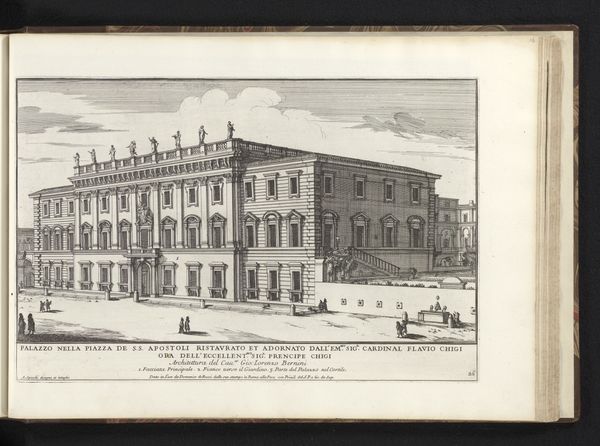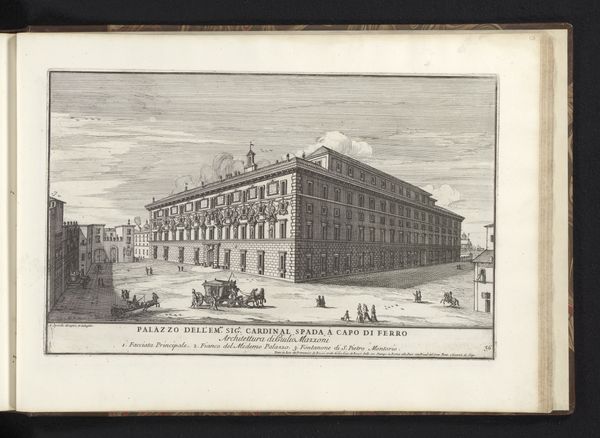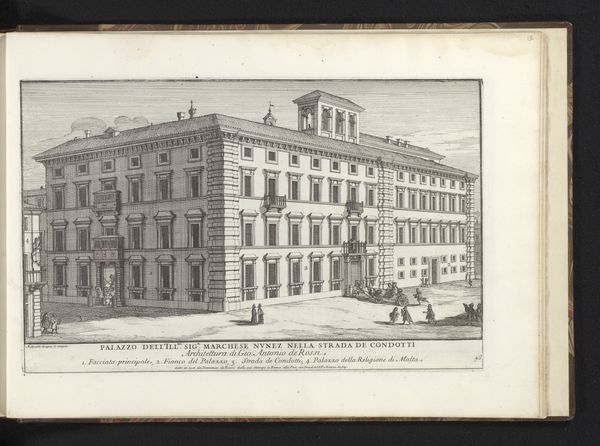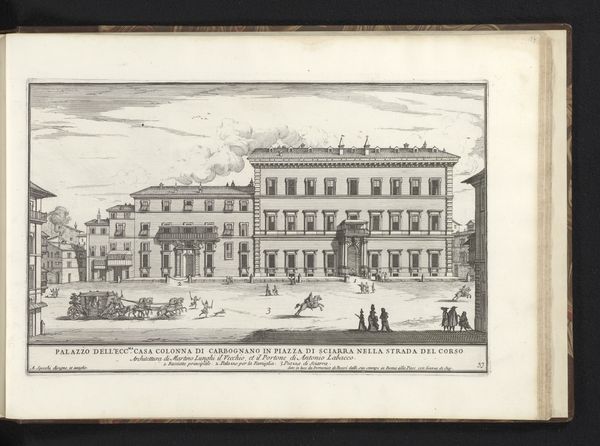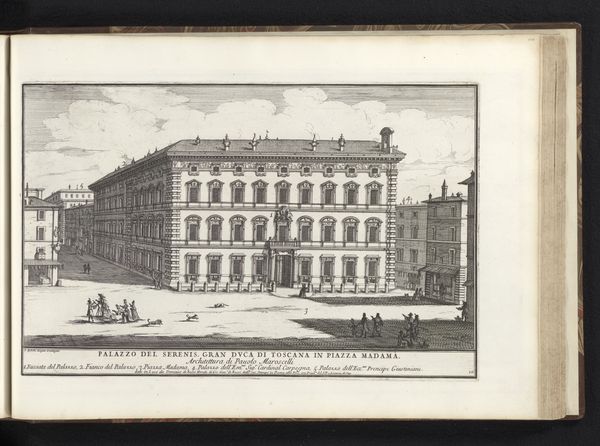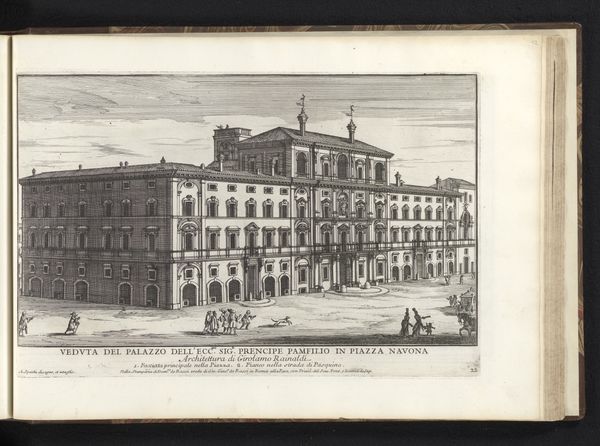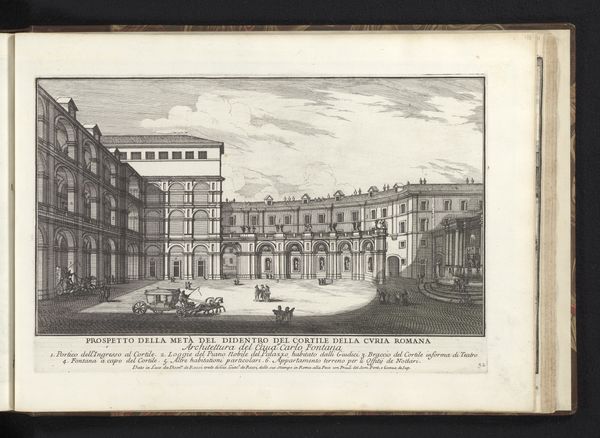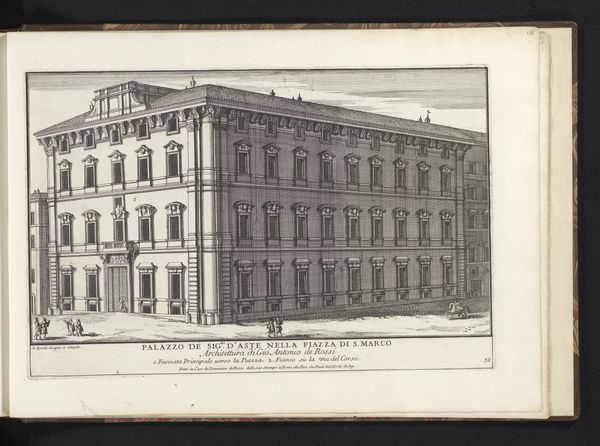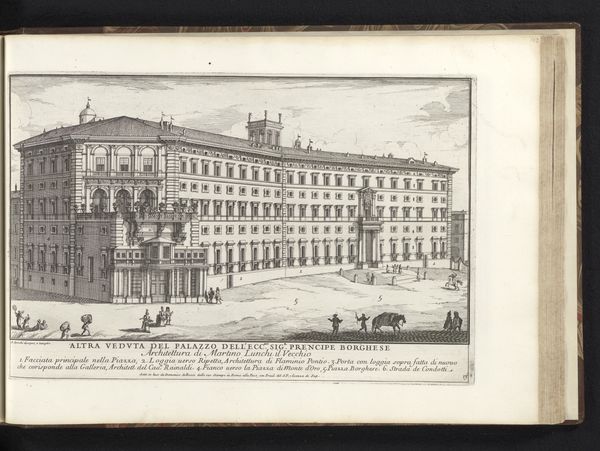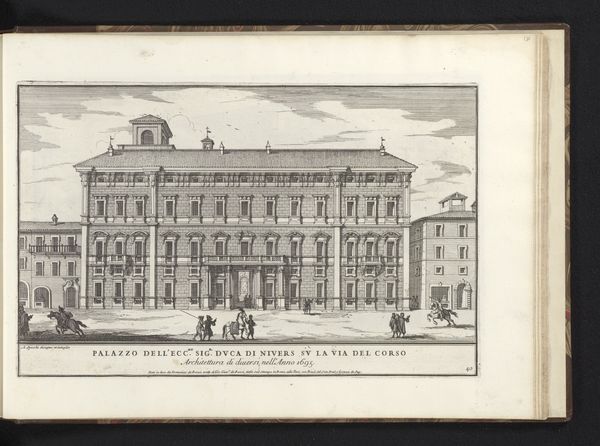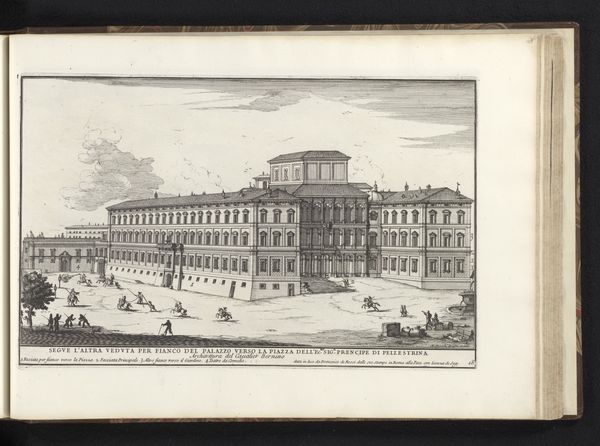
print, engraving, architecture
#
baroque
# print
#
perspective
#
cityscape
#
engraving
#
architecture
Dimensions: height 215 mm, width 327 mm
Copyright: Rijks Museum: Open Domain
Curator: This engraving from 1699, titled "Collegio de Propaganda Fide te Rome," depicts the College of the Propagation of the Faith in Rome, a fascinating example of Baroque architecture captured by Alessandro Specchi. Editor: It strikes me as incredibly ordered and precise. There's something about the crisp lines and clear depiction that conveys a sense of calm authority. It feels less like a snapshot of a building and more like a statement. Curator: Precisely! The College played a crucial role in the Catholic Church’s missionary efforts, and Specchi’s depiction serves, in part, as a statement of power. Prints like this were vital in disseminating architectural styles and reinforcing institutional influence. Editor: I see what you mean. It's not just a building; it's an instrument. The linear perspective is quite pronounced, isn't it? Drawing the eye directly to the centrally placed facade. Curator: Indeed, the manipulation of perspective directs our gaze and reinforces the building’s grandeur. Its placement in Piazza di Spagna was strategic and symbolic. The image reinforces this message through careful detail in its execution. Editor: Do you think the sparse figures walking around emphasize the stillness or the scale of the architecture itself? There is a tension there for me. They almost appear incidental. Curator: Perhaps both? The figures are essential to suggest that this impressive architectural and ideological complex functions within a bustling, lived-in urban environment, not merely a static monument. Editor: It's incredible how an engraving, with its limitations of line and tone, could project such imposing scale and ideological heft. It reminds me that so much of an institution is projected through calculated image construction. Curator: Absolutely, this work exemplifies how art becomes interwoven with political messaging and contributes to the way in which societal structures assert their presences. Editor: Seeing this now, I recognize that images such as these shaped the worldview, architecture and cityscapes far removed from Rome itself. The influence of architectural rendering in 1699. Curator: Yes! Reflecting on the piece, it's clear how images served to solidify an architectural identity alongside political ideology. Editor: I concur; these calculated lines shaped the narrative of power with incredible conviction and force.
Comments
No comments
Be the first to comment and join the conversation on the ultimate creative platform.
